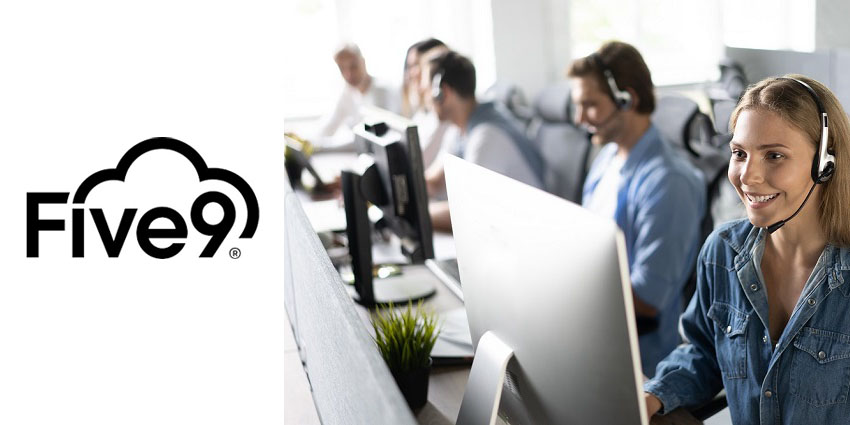It’s the holy grail – a slick, fast, satisfying customer communication experience that differentiates organisations from their competitors and drives loyalty.
No matter what the vertical sector; in an omni-channel, always-on world, it’s a hard trick to pull off.
In healthcare, the key issues are a little more challenging than most.
Deploying the kind of powerful cloud-based technology essential to success brings with it security concerns around patient confidentiality.
Next there are pandemic-related specialist workforce shortage and/or burnout issues to contend with.
Then financial pressures bite too: the need to deliver more for less in order to demonstrate value for money or protect precious margins.
And, finally, there is increasing competition among healthcare providers – meaning quality of service is directly linked to that all-important customer loyalty.
Around the world, systems of primary healthcare vary hugely: some purely private or insurance-based, some state-delivered at taxpayers’ expense and free at the point of delivery, others a mix of the two.
Conversely, most countries’ secondary healthcare activities – such as elective or cosmetic surgery, dentistry, physiotherapy, ophthalmology, podiatry, etc. – are wholly commercial enterprises where consumers demand the same communication and service delivery experience they get in, say, the retail sector.
All of that spells an opportunity for Value Added Resellers, System Integrators and Managed Service Providers who partner with the right vendor.
“Regardless of the delivery model, healthcare consumers want the Amazon experience – they want the ability to interact with their providers 24/7, they want immediate and great service, and they want first call resolution,” says Roni Jamesmeyer, Senior Healthcare Product Marketing Manager at global provider Five9, whose ‘Intelligent Cloud Contact Center’ solution delivers on multiple fronts.
“In the US, for example, we are seeing the rise of 24/7 retail clinics where people can get medical treatment at any time, day or night. Not long ago, it was only available from 8am-5pm Monday to Friday.”
That dramatic evolution – and the resultant huge rise in omni-channel interactions between providers and patients – is now driving demand across the rest of the world for full-featured contact centre functionality.
The ability to deliver a better customer experience over the phone by automatically queueing calls and performing call-backs so you know when your call will be handled is just one easy thing to do.
Other ways like routing calls to qualified experts, processing repeat prescription requests, answering frequently asked questions, and providing otherwise basic information – all without the need to engage a human agent – can have a hugely positive impact on call handler efficiency and higher positive outcomes.
With more and more widespread adoption of smart tech and unified communications, people are increasingly content to interact via IVR and other interaction platforms like online portals, virtual agents or chatbots.
The returns on investment can be significant and makes the pre-sales conversation an easy one to start.
“Self-service and automation are both key elements to managing call volumes and routing calls appropriately,” says Jamesmeyer.
“People don’t need or even want to talk to a human for everything. Today, we are always on with our mobile devices; using chatbots and talking to Siri and Alexa every day in our homes.
“Of course, it’s inappropriate for automation to replace human interaction completely – particularly in healthcare where emotions can run high in stressful situations – but if provider organisations are able to deflect 5-10% of the non-urgent calls, it can free up time for those potentially lifesaving calls which can make a big difference to multiple aspects of their operations.
“From the provider side, lines and agents are freed up for more urgent calls; callers are able to get faster resolutions at the times of their choosing; organisations are able to design more cost-efficient workflows reflective of new call volumes and peak calling times; and pressure is eased on already over-burdened frontline clinicians and licensed professionals.
“From the consumer side, patients feel the GP is more engaged in their care because of the clear, concise and personalized communications stream they are getting. People don’t mind waiting for a call back if they have an idea of when it will take place and they know they will get the right support. Simple communications like that really can make a big difference.”
Healthcare personalisation – in particular, home-based care as opposed to hospitalisation – is another increasingly-evolving area that is capable of benefitting big from clever contact centre functionality.
The economic upsides are obvious, but studies also suggest that patient outcomes and health in general can be improved as a result of smart community engagement.
“Again, communication is key,” says Jamesmeyer.
“It’s about moving healthcare delivery to the home with tools like remote devices and wearable technology. We already see the potential with devices such as Fitbits and that kind of approach is only going to develop more going forward.
“For patients with chronic conditions such as diabetes, clinicians already call them to check their glucose, weight and pulse ox readings. A Five9 intelligent virtual agent can be programmed to collect that information, freeing up that clinician’s time to focus on the more acute patients.
“And omnichannel communications tools such as texts can be sent to Alzheimer’s patients at home to be reminded to take medication and maybe to send a text back once the medication has been taken.”
For patients in rural areas without access to the internet or cellular services, the Five9 IVA can ask for those readings over the landline using natural language processing capabilities.
All of those interactions can be captured and added to patients’ digital medical records – accessible and manageable by them and their caregivers via a portal and seamlessly integrated with the healthcare provider’s contact centre.
How and when do patients want to be contacted? What information is most important to them? How can automated communication improve their lives? These are all questions that smart contact centre functionality cannot only help pose, but also help answer.
“Commercial healthcare providers facing a continued, long-term workforce shortage must embrace the technology and leverage its power to deliver a better, slicker, more satisfying patient experience because they have to,” says Jamesmeyer.
“Five9 can solve both the ‘great resignation’ and deliver a better patient experience at the same time.
“Get it right, and the quality of healthcare in general increases.
“And that surely has to be a win-win for everyone.”
To learn more about how Five9 can help you and your healthcare customers’ businesses succeed and grow, visit Five9.







